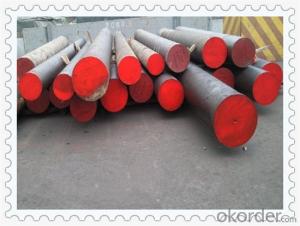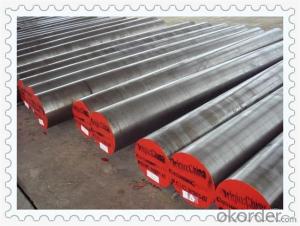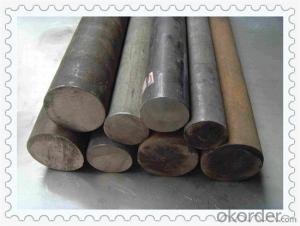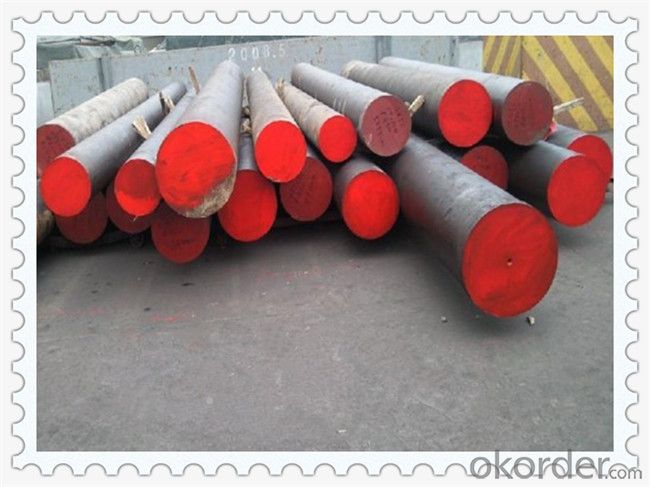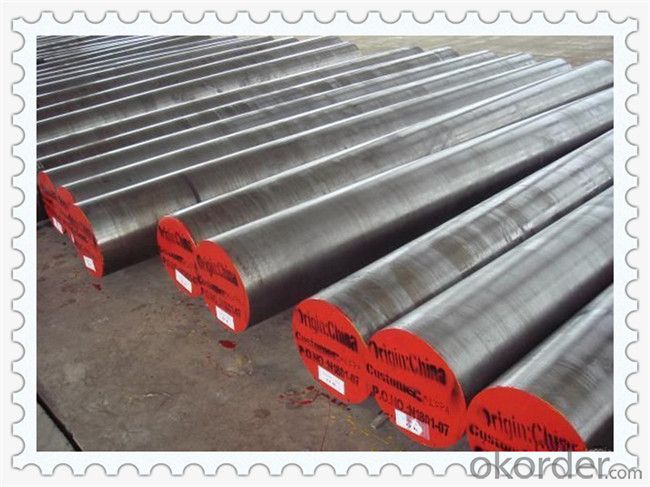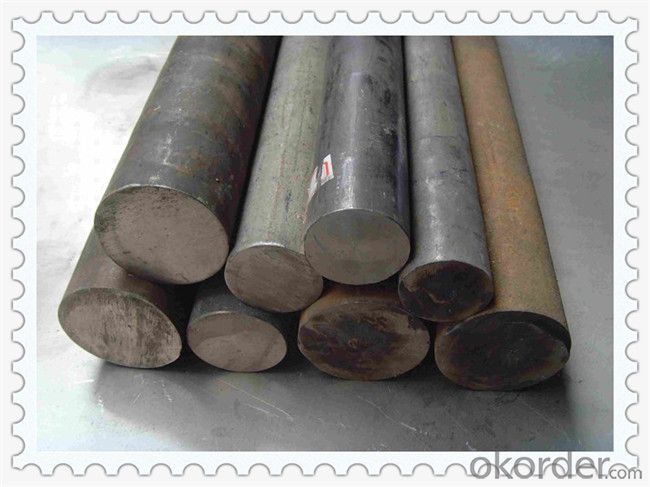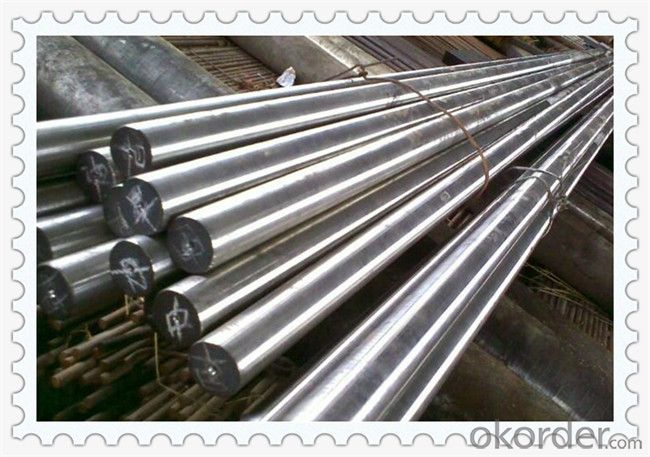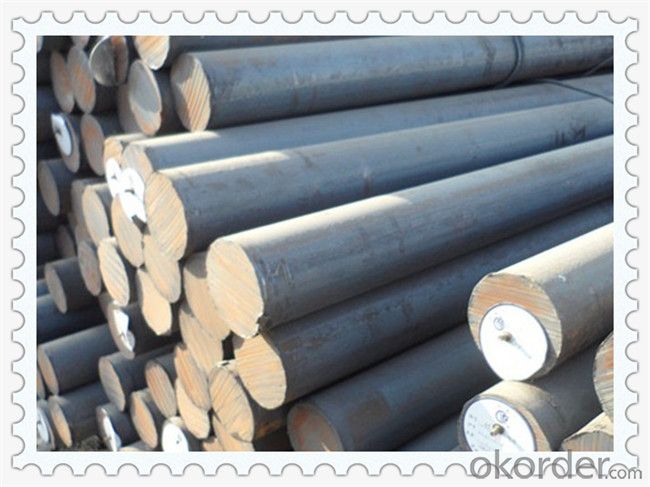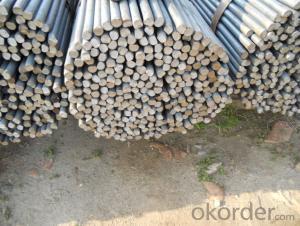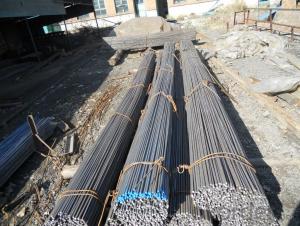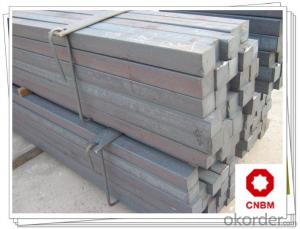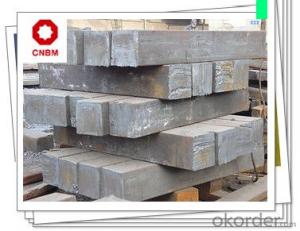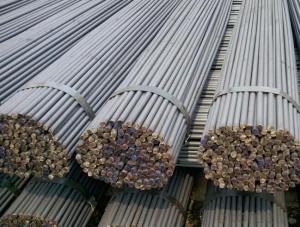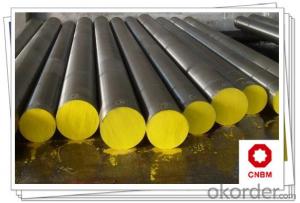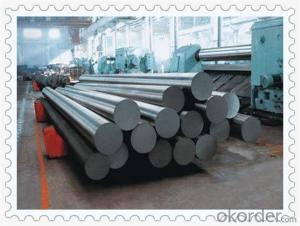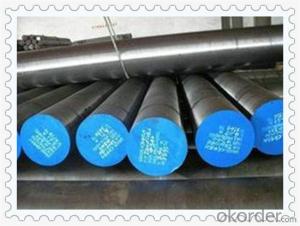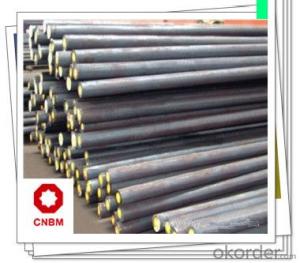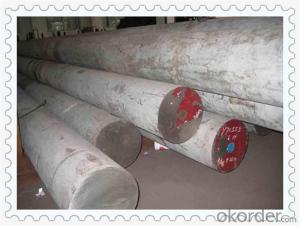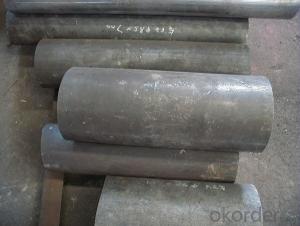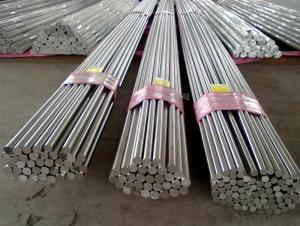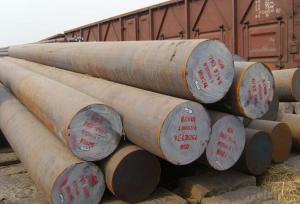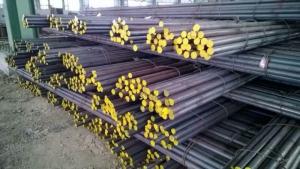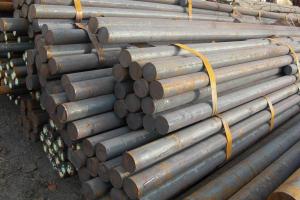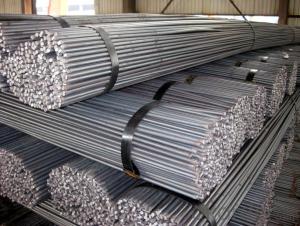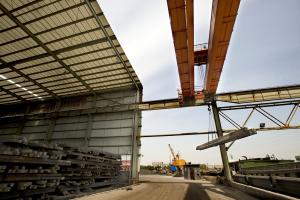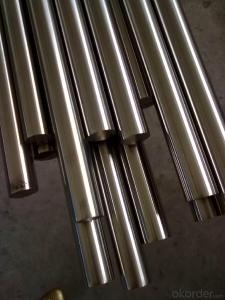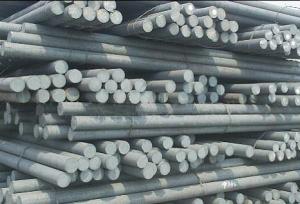Carbon Steel Rod SAE 1035 Round Steel Bars
- Loading Port:
- China main port
- Payment Terms:
- TT OR LC
- Min Order Qty:
- 30 m.t.
- Supply Capability:
- 10000 m.t./month
OKorder Service Pledge
OKorder Financial Service
You Might Also Like
Carbon Steel Rod SAE 1035 Round Steel Bars
Products Details
Item | 1035 Steel Bar,1035 Steel Rod,Carbon steel bar 1035, Carbon steel rod 1035,Alloy steel bar 1035,Alloy steel rod 1035, Hot sale in stock carbon steel bar 1035,1035 carbon steel round bar | |
Standard | GB,AISI,JIS,ASTM,EN,ASTM,etc | |
Material | 10#,S210C,S09CK,1010,C10E,15#,S15C,S15CK,1015,20#, S20C,S20CK,1020,C22,25#,S25C,1025,30#,S30C,1030,35#, S35C,1035,40#,S40C,1040,45#,S45C,1045,C45E,50#,S50C, 1050,55#,1055,60#,C60,20Mn,1022,25Mn,30Mn,40Mn,50Mn, 20Mn2,1320,30Mn2,1330,1335,1340,etc | |
Shape | Round,Flat,Square,Angle,Hexagonal,etc | |
Surface | Black painted,Galvanized, | |
Dimension | Round bar | Diameter:4mm-800mm |
Angle bar | 3mm*20mm*20mm-12mm*800mm*800mm | |
Square bar | 4mm*4mm-100mm*100mm | |
Flat bar | Thickness:2mm-100mm | |
Width:10mm-500mm | ||
Hexagonal bar | 4mm-800mm | |
Length:2m,4m,5.8m,6m,11.8m,12m,or as required | ||
Price Term | EXW,CFR,FOB,CIF,etc | |
Payment Term | L/C,T/T,D/P,etc | |
Package | Standard seaworthy export package or as customer’s request. | |
Export To | Singapore,Bangladesh,Italy,India,Indonesia,Spain,Brazil,Iran, Peru,Chile,Slovenia,Cameroon,Thailand,Turkey,etc | |
Delivery Time | According to order’s quantity. | |
Application | Carbon steel rod applies to chemical industry,shipping industry, manufacturing industry,construction,decorate industry,electric power,pump shafts,sanitary wares,furniture handles,boiler,high temperature resistant,low temperature resistant,corrosion resistant. | |
Contact | My all info are below,please feel free to contact me. | |
Chemical Composition of 1035 Steel Bar
| Standard | C | Si | Mn | Cr | Ni | P/S ≤ |
| DIN | ≤0.15 | ≤1.0 | ≤2.0 | 18 | 9 | 0.03 |
| GB | ≤0.15 | ≤1.0 | ≤2.0 | 18 | 9 | 0.03 |
Material and Grade
| Material | Grade | Material | Grade |
| 8#-10# | φ16-290 | 65Mn | φ40-300 |
| 15# | φ14-150 | 45Mn2 | φ18-75 |
| 20# | φ8-480 | 60Si2Mn | φ16-150 |
| 35# | φ8-480 | 20CrMnTi | φ10-480 |
| 45# | φ6.5-480 | 20CrMnTiB | φ16-75 |
| Q235B | φ6.5-180 | GCr15 | φ16-400 |
| 40Cr | φ8-480 | ML35 | φ8-150 |
| 20Cr | φ10-480 | T8-T13 | φ8-480 |
| 42CrMo | φ12-480 | Cr12 | φ16-300 |
| 35CrMo | φ12-480 | Cr12MoV | φ16-300 |
| 20CrMo | φ12-300 | 3Cr2W8V | φ16-300 |
| 38CrMoAL | φ20-300 | 45Cr50Cr | φ20-300 |
| 5CrMnMo | φ20-450 | 20CrMnMo | φ20-300 |
| 16Mn(Q345B) | φ14-365 | 40Mn2 | φ28-60 |
| 50Mn | φ40-200 | 35Cr | φ55 |
| 15CrMo | φ21 φ24 φ75 | 15Mn | φ32φ170 |
| 25# | φ16-280 | 40CrMnMo | φ80φ160 |
| YF45MnV | φ28-80 | 20CrMnMo | φ20-300 |
| 30# | φ6.5-480 | 27SiMn | φ20-350 |
| 30CrMo | φ28 | Crwmn | φ20-300 |
| 30CrMnTi | φ16-300 | H13(4Cr5MoSiVi) | φ20-300 |
| 60# | φ210 φ260 | 40CrNiMo | φ20-400 |
Products Show
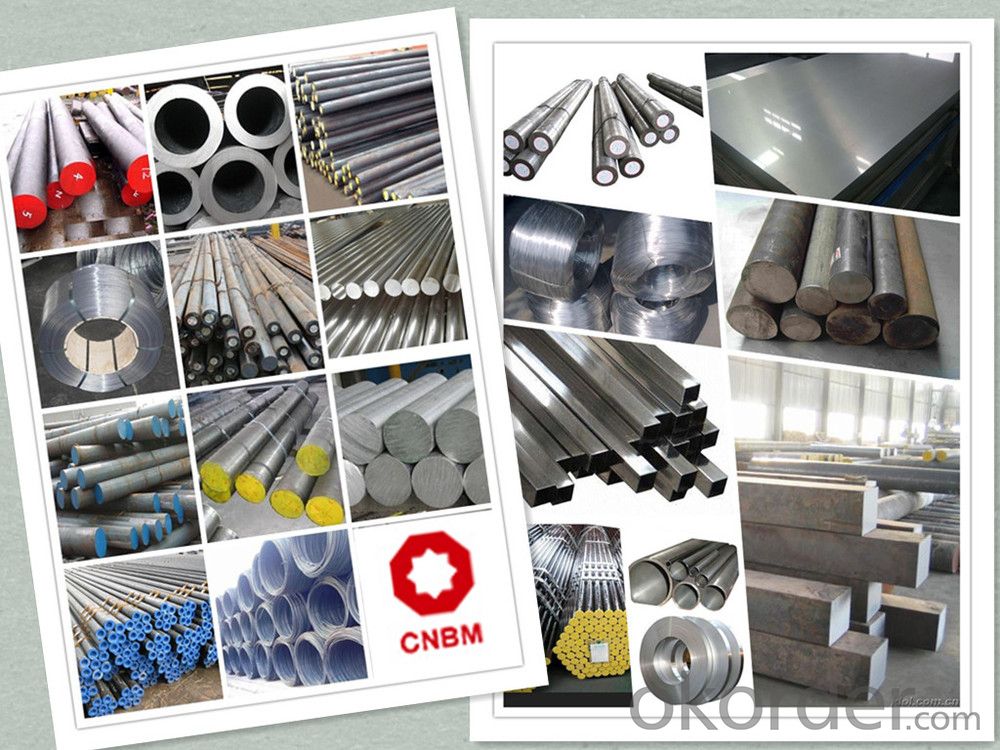
Product Overviews
| Product Name | Typical Grades | Diameter(mm) | Standard adopted |
| Carbon Steel | 20 (1020/S20C/C22) | Ø16-Ø300 |
GB/SAE/JIS/DIN
|
| 40 (1040/S40C/C40) | |||
| 45 (1045/S45C/C45) | |||
| Bearing Steel | GCr9 (51100/SUJ1) | Ø12-Ø250 | |
| GCr15 (52100/SUJ2/100Gr6) | |||
| GCr9SiMn (A485-Gr.1/SUJ3) | |||
Cr-Mo Steel | 20Cr (5120/SCr420H/20Cr4) | Ø12-Ø250 | |
| 40Cr (5140/SCr440/41Cr4) | |||
| 42CrMo(4140/SCM440/42CrMo4) | |||
| Gear Steel | 20CrNiMo | Ø16-Ø600 | |
| 20CrMn(5115/SMnC420/20MnCr5) | |||
| 20CrNiMo(8620/SNCM220/20CrMiMo2) |
Application
| Carbon Steel | Mold bottom, Plastic mold, Construction machinery parts Automobile parts, Security grills, Screens, Construction |
| Bearing Steel | Aerospace, Navigation, Nuclear energy, Chemical industry Electronic information, Petrochemical, Instrument and meter Transportation |
| Cr-Mo Steel | Mechanism & Fasteners gear, Stressed components for vehicles Engines and machines, Parts of larger cross-section |
| Gear Steel | All kinds of gears, Statically and dynamically stressed component for vehicles Engines and machine, Larger cross-section parts, Crankshafts |
Work Shop
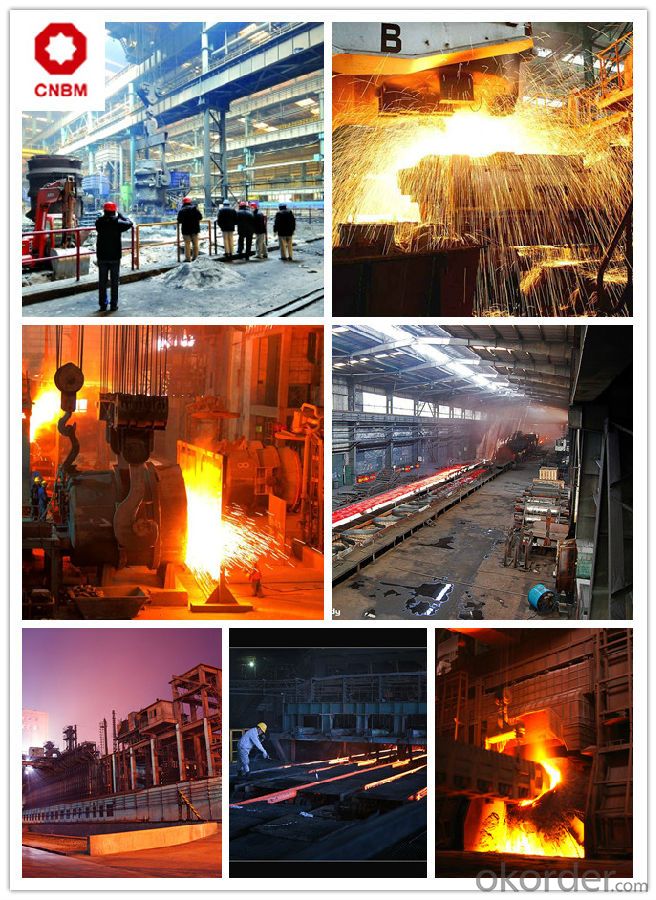
Company Information
CNBM International Corporation is the most important trading platform of CNBM group.
Whith its advantages, CNBM International are mainly concentrate on Cement, Glass, Iron and Steel, Ceramics industries and devotes herself for supplying high qulity series of refractories as well as technical consultancies and logistics solutions.

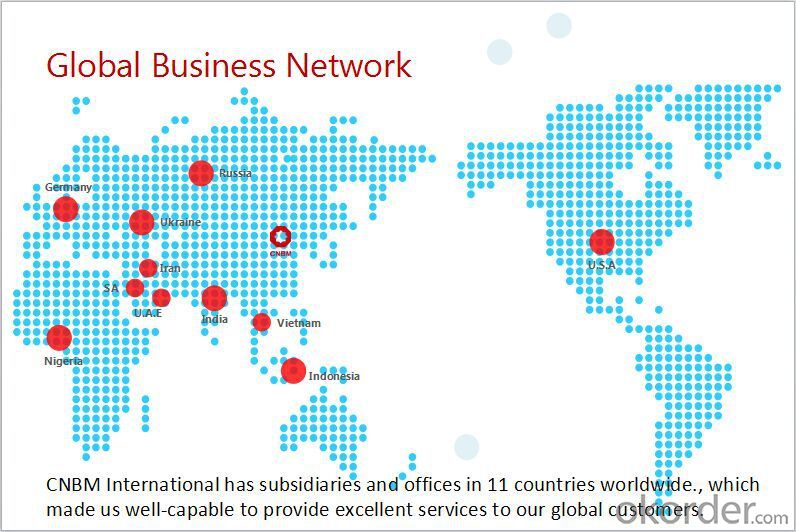
FAQ
1, Your advantages?
professional products inquiry, products knowledge train (for agents), smooth goods delivery, excellent customer solution proposale
2, Test & Certificate?
SGS test is available, customer inspection before shipping is welcome, third party inspection is no problem
3, Factory or Trading Company?
CNBM is a trading company but we have so many protocol factories and CNBM works as a trading department of these factories. Also CNBM is the holding company of many factories.
4, Payment Terms?
30% TT as deposit and 70% before delivery.
Irrevocable L/C at sight.
5, Trading Terms?
EXW, FOB, CIF, FFR, CNF
6, After-sale Service?
CNBM provides the services and support you need for every step of our cooperation. We're the business partner you can trust.
For any problem, please kindly contact us at any your convenient time.
We'll reply you in our first priority within 24 hours.
Packaging & Delivery
1, Packaging: seaworthy package or as required
2, Delivery: 35-45 days or based on quantity
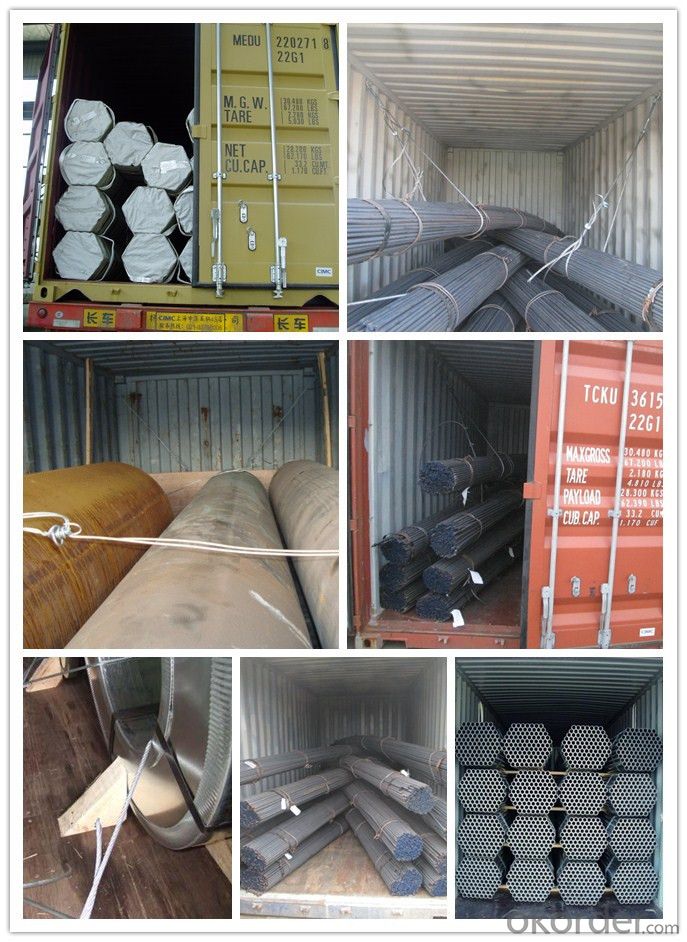
- Q: Are steel round bars suitable for use in the construction industry?
- Yes, steel round bars are commonly used in the construction industry due to their strength, durability, and versatility. They provide structural support in various applications such as reinforcement in concrete, framing, and the creation of beams and columns. Additionally, steel round bars can be easily fabricated, welded, and formed into different shapes, making them a suitable choice for a wide range of construction projects.
- Q: What are the advantages of using sulfur-alloy steel round bars?
- There are several advantages of using sulfur-alloy steel round bars. Firstly, sulfur-alloy steel round bars offer improved machinability, making it easier to shape and cut the material into desired forms. Additionally, the sulfur content in the alloy enhances the overall strength and hardness of the steel, making it more durable and resistant to wear and tear. Moreover, sulfur-alloy steel round bars have excellent thermal conductivity, allowing for efficient heat transfer during various applications. Lastly, these bars are cost-effective as they offer a combination of desirable properties at a relatively lower price compared to other specialized alloys.
- Q: What is the difference between cast iron and round steel?
- Is also called round billet cast iron or iron by calcination with heavy machinery forging into steel (called the moral is toughened and hardened into steel or steel), the main component of alloy is composed of iron, carbon and silicon steel just according to the different areas in the use of alloy in carbon and silicon content in different precipitation in steel forging process of carbon and silicon was decreased to different areas of demand.
- Q: What are the different surface defects that can be found in steel round bars?
- There are several surface defects that can be found in steel round bars. These defects can vary in severity and can have an impact on the overall quality and performance of the steel. Some common surface defects include: 1. Scale: Scale refers to the thin, flaky layer of iron oxide that forms on the surface of steel during the manufacturing process. It can appear as a rough, scaly texture and may cause issues with adhesion or coating application. 2. Pitting: Pitting is the formation of small holes or depressions on the surface of the steel. It can be caused by corrosion, contamination, or uneven heating during the manufacturing process. Pitting can weaken the structural integrity of the steel and increase the likelihood of failure. 3. Scratches: Scratches are superficial marks or cuts on the surface of the steel. They can occur during handling, transportation, or processing. While small scratches may not significantly affect the performance of the steel, deep or extensive scratches can create stress concentrations and reduce the strength of the material. 4. Cracks: Cracks are linear fractures that can occur on the surface of the steel. They can be caused by excessive cooling, improper heat treatment, or mechanical stress. Cracks can propagate and lead to catastrophic failure if not detected and addressed. 5. Decarburization: Decarburization is the loss of carbon content on the surface of the steel due to exposure to high temperatures or improper heat treatment. It can result in a softer and weaker surface layer, reducing the material's strength and hardness. 6. Laminations: Laminations are layers or separations within the steel round bar that can occur due to improper rolling or manufacturing processes. These can weaken the material and reduce its load-bearing capacity. 7. Inclusions: Inclusions are non-metallic impurities or foreign substances that are trapped within the steel during the manufacturing process. They can include oxides, sulfides, or other debris. Inclusions can act as stress concentrators and reduce the material's resistance to cracking and deformation. Detecting and addressing these surface defects is crucial to ensure the quality and reliability of steel round bars. Various inspection techniques such as visual examination, ultrasonic testing, magnetic particle testing, or dye penetrant testing can be employed to identify and assess the severity of these defects.
- Q: What is the minimum diameter available for steel round bars?
- The minimum diameter available for steel round bars can vary depending on the manufacturer and the specific requirements of the project. However, commonly available sizes range from 1/4 inch to 1 inch in diameter.
- Q: What are the advantages of using aluminum-alloy steel round bars?
- There are several advantages of using aluminum-alloy steel round bars. Firstly, aluminum-alloy steel is known for its lightweight nature, making it easier to handle and transport compared to other materials. Additionally, aluminum-alloy steel has a high strength-to-weight ratio, making it ideal for applications where strength is crucial but weight needs to be minimized, such as in aerospace or automotive industries. Another advantage is its excellent corrosion resistance, which helps prolong the lifespan of the round bars in various environments. Moreover, aluminum-alloy steel has good thermal and electrical conductivity properties, making it suitable for applications that require heat or electrical transfer. Overall, the combination of strength, lightweight, corrosion resistance, and conductivity make aluminum-alloy steel round bars a versatile and advantageous choice for various industries.
- Q: What are the different types of steel round bars available in the market?
- There are several different types of steel round bars available in the market, including mild steel round bars, carbon steel round bars, alloy steel round bars, stainless steel round bars, and tool steel round bars. Each type of steel round bar has its own specific properties and applications, making them suitable for various industries and purposes.
- Q: Can steel round bars be used for making propeller shafts?
- It is indeed possible to utilize steel round bars in the production of propeller shafts. The utilization of steel in propeller shafts is widespread due to its robustness, endurance, and ability to withstand corrosion. In particular, round bars are frequently favored due to their shape, which offers exceptional strength and load-bearing capabilities. The decision regarding the steel grade and specific properties will be contingent upon the propeller shaft's requirements, such as the desired dimensions in terms of length, diameter, and torque capacity. Moreover, factors like cost, weight, and manufacturability may also play a role in influencing the selection of steel round bars for propeller shafts.
- Q: 20# difference between round bar and A3 round bar, can they be used separately?
- 20# rounds are plain carbon steel, as well as 10#, 20#, 45#, etc.A3 round bar is Q235, grade is ABCDE, etc., commonly used is Q235BIn use performance, 20# hardness is strong, but the elasticity is bad, welding performance is poorA3 hardness is less, but good elasticity, good welding performanceAs for specific can not be replaced, mainly depends on the use of places.
- Q: How do steel round bars perform under impact or shock loading?
- Steel round bars are known for their exceptional performance under impact or shock loading. Due to their high strength and toughness, steel round bars can withstand sudden forces and resist deformation or failure. The inherent properties of steel, such as its hardness and ductility, contribute to its ability to absorb energy and distribute it throughout the material, minimizing the impact on the structure. When subjected to impact or shock loading, steel round bars undergo plastic deformation, which allows them to absorb the applied energy without breaking. The ability to absorb energy is crucial in various applications, such as construction, automotive, and machinery industries, where components are often subjected to dynamic loads. Additionally, steel's excellent fatigue resistance further enhances its performance under impact or shock loading. Even when subjected to repeated impacts, steel round bars can withstand the cyclic loading without undergoing significant degradation in their mechanical properties. Moreover, steel round bars can be further enhanced through various heat treatment processes, such as quenching and tempering, to improve their resistance to impact or shock loading. These processes help to refine the microstructure of the steel, resulting in increased strength, toughness, and hardness. In conclusion, steel round bars have a remarkable performance under impact or shock loading. Their high strength, toughness, and ability to absorb energy make them reliable and widely used in applications where sudden forces or dynamic loads are expected.
Send your message to us
Carbon Steel Rod SAE 1035 Round Steel Bars
- Loading Port:
- China main port
- Payment Terms:
- TT OR LC
- Min Order Qty:
- 30 m.t.
- Supply Capability:
- 10000 m.t./month
OKorder Service Pledge
OKorder Financial Service
Similar products
Hot products
Hot Searches
Related keywords
